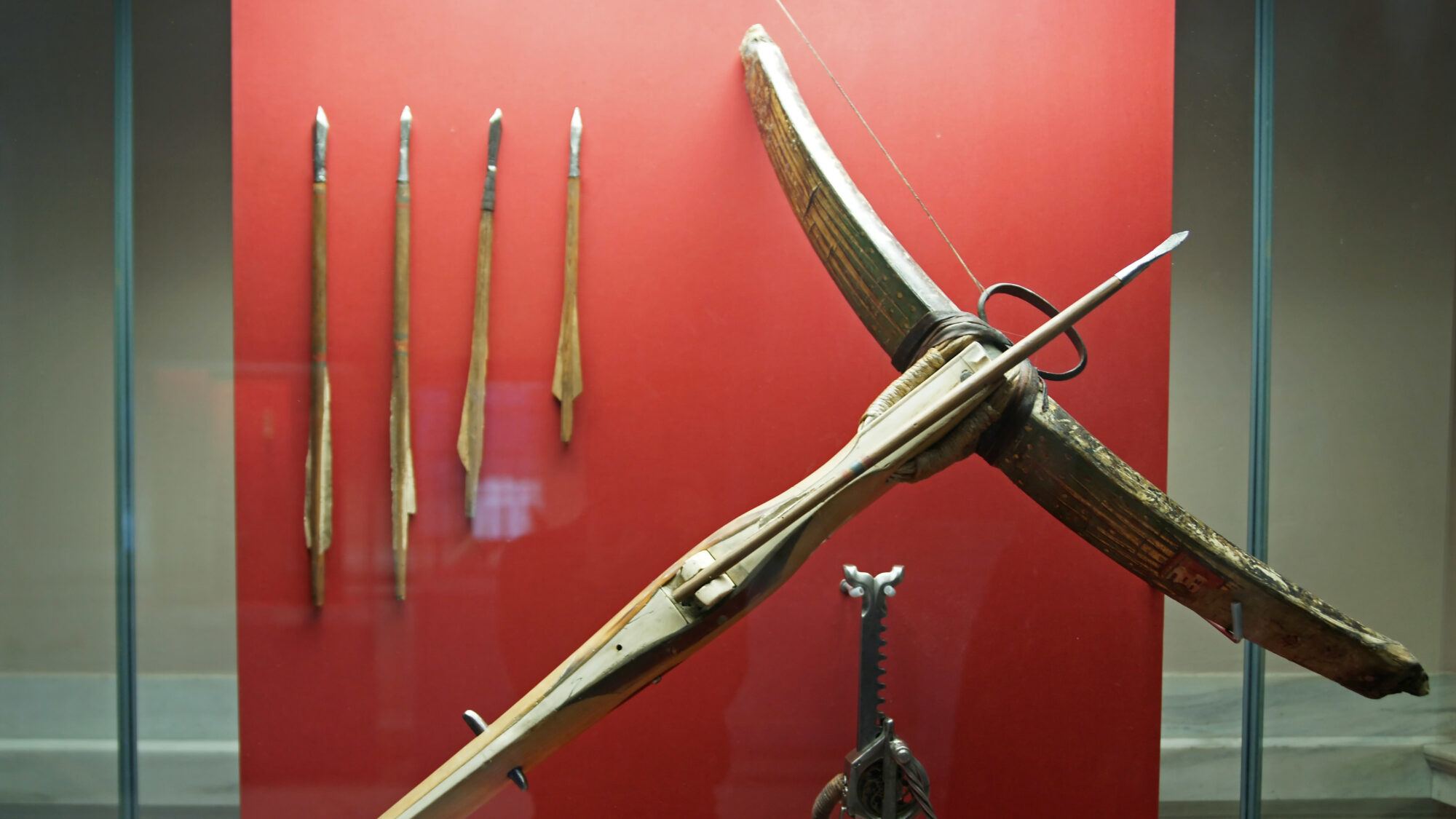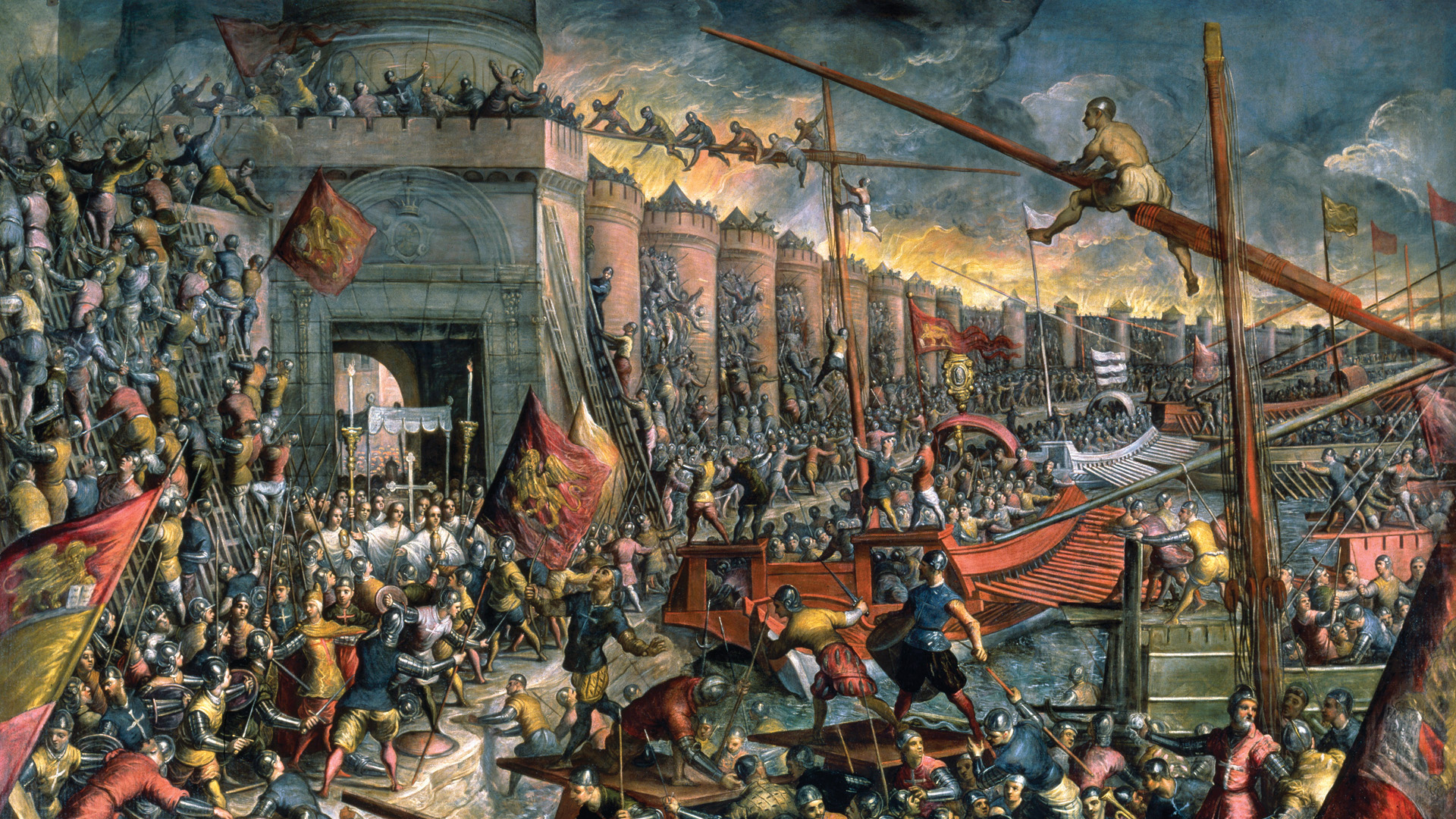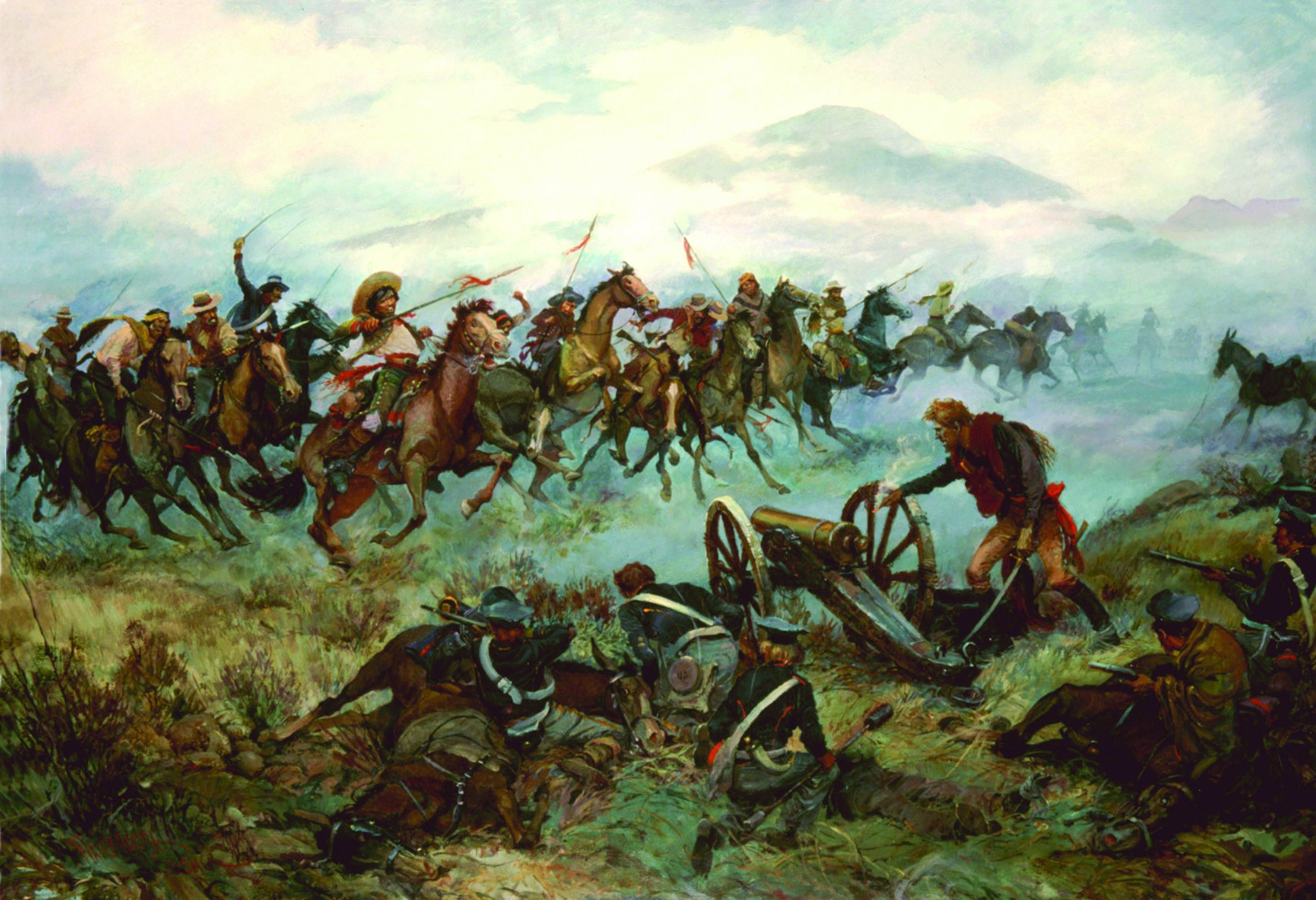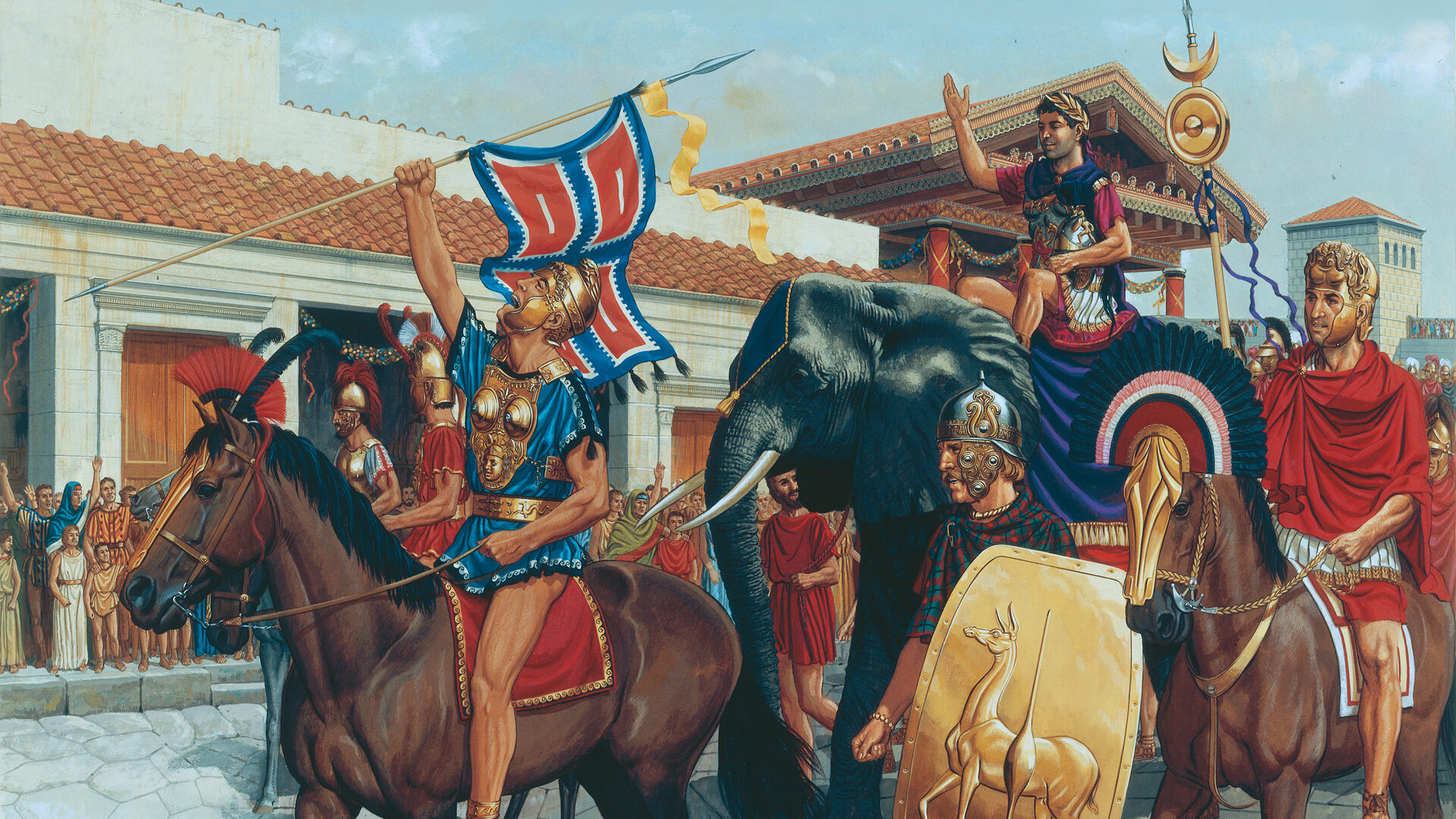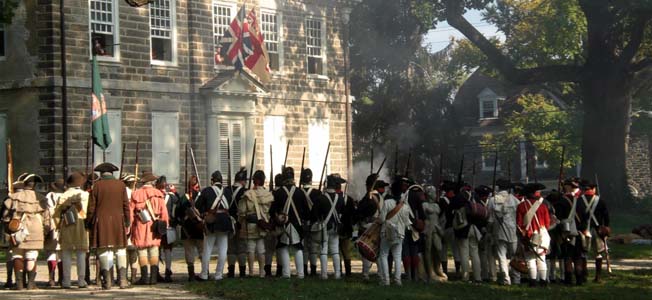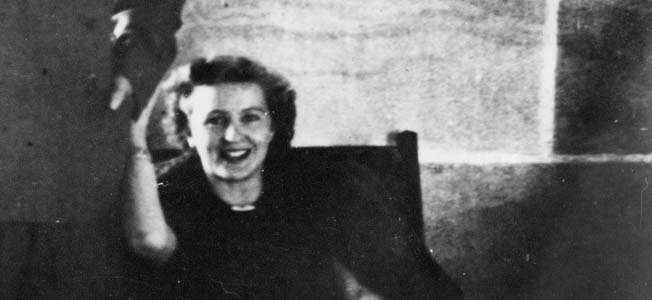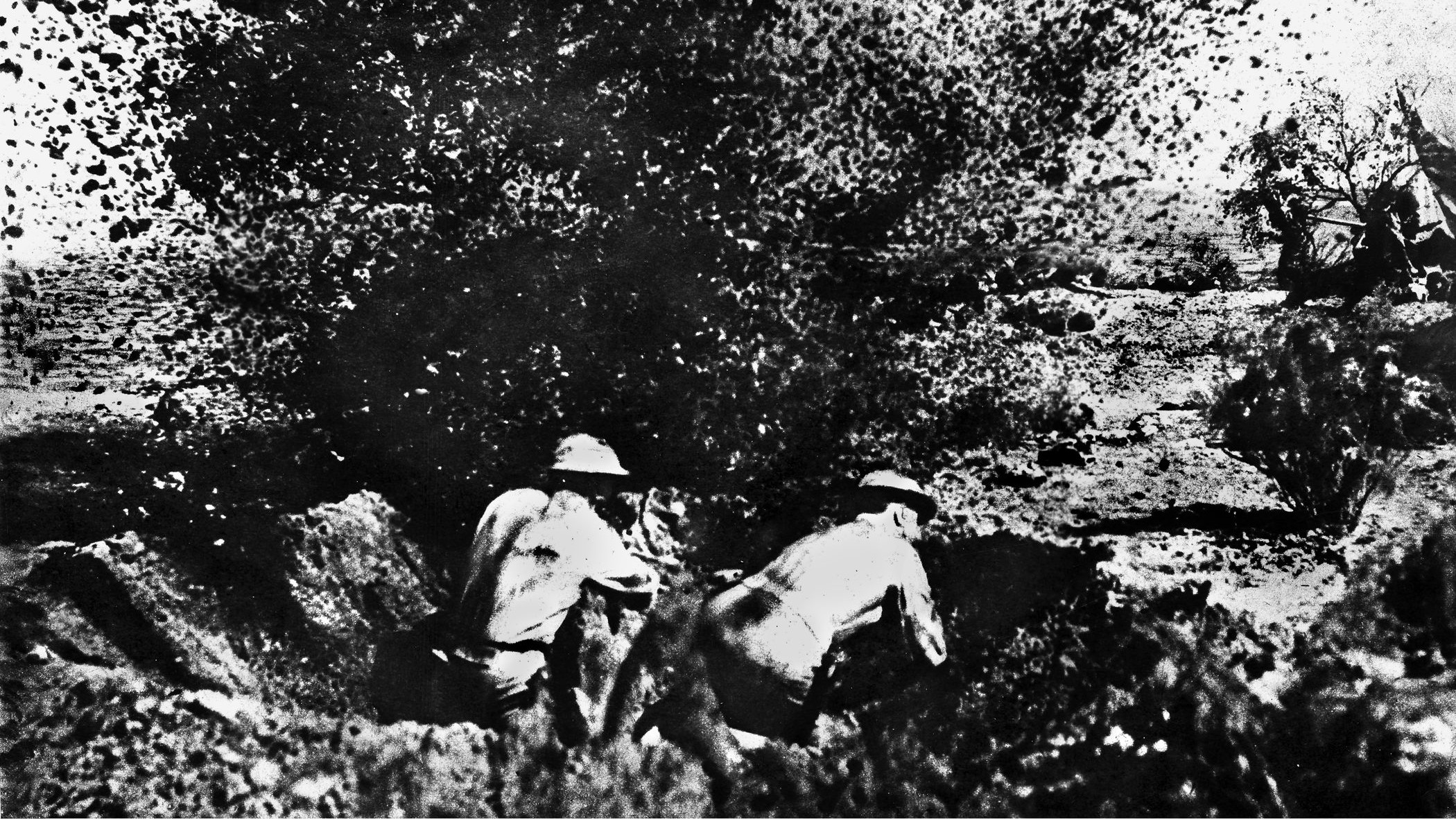By Arnold Blumberg
Anna Comnena, daughter of the Byzantium Emperor Alexius Comnenus, writing at about the time of the First Crusade (1096-1099), said of the medieval crossbow, a military tool new to her part of the world, “The crossbow is a weapon of the barbarians [western Europeans], absolutely unknown to the Greeks [Byzantines].” Warming to her topic the princess related how “in the shooting, the string exerts tremendous violence and force, so that the missiles wherever they strike do not rebound; in fact they transfix a shield, cut through a heavy iron breastplate and resume their flight on the far side, so irresistible and violent is the discharge. Such is the crossbow, a truly diabolical machine. The unfortunate man who is struck by it dies without feeling the blow; however strong the impact he knows nothing of it.”
Thought to have been invented about the time of the First Crusade by western Europeans, the crossbow actually arose around 500 bc simultaneously in China and Greece. The impetus for its creation was the desire to improve upon bows of the time. It would come to later redefine war in the Middle Ages. (Read more about the events and conflicts that came to define modern Europe inside the pages of Military Heritage magazine.)
The Origins of the Crossbow
Ancient Chinese manuscripts, such as the Shih chi written around 100 bc, document the extensive use of crossbows during the 4th century bc, notably at the Battle of Ma-ling in 341. From works produced during the Han Dynasty (206 bc-25 ad) it appears the crossbow was at the time the principal offensive arm of foot soldiers fighting on China’s far-flung frontiers. Owing to its hitting power it might have given the Chinese an advantage over the bow-firing nomadic tribesmen threatening China’s northern border.
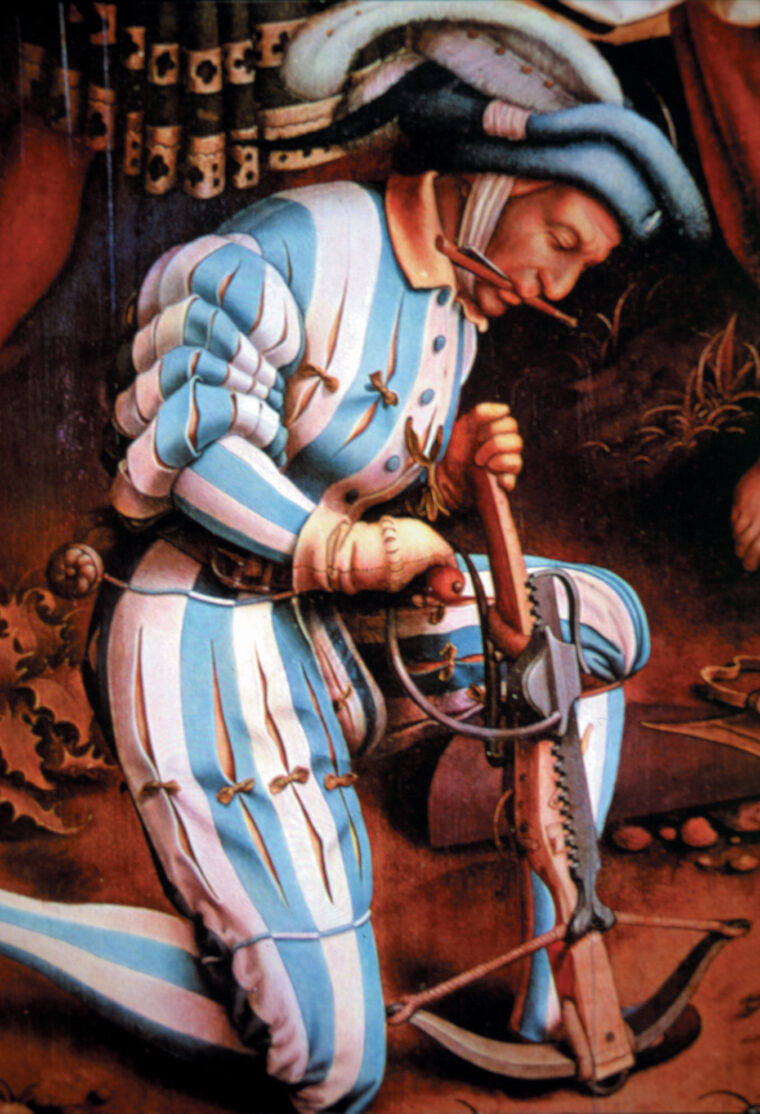
Quickly adopted as a personal battlefield weapon, the crossbow changed the character of Chinese warfare. Before crossbows, combat in China had been highly individualized and dominated by chariots. But the capacity of the crossbowmen to shoot through body armor and shields from a distance drove the Chinese chariot into obsolescence. More importantly, it transformed the Chinese method of making war. Coincidental with the wider use of the weapon, the Chinese approach to fighting came to emphasize maneuver and the exploitation of psychological advantage.
While the Chinese embraced the value of the crossbow, the Greeks slowly got rid of it by improving it out of existence. First mentioned in Greek literature at the end of the 4th century bc, the simple, one-man portable weapon (called gastrophetes,or ‘belly-bow”) was transformed into a large siege engine based on the crossbow principle. This enlarged crossbow required a number of men to work it. The vast increase in size, and the added manpower needed to operate it, meant that the weapon was no longer a viable foot soldier’s sidearm. After this time the crossbow as a personal weapon was not heard of in the West until about 950 ad, and only then in the context of a hunting tool.
The Medieval Crossbow: What Made the “Arbalist” Such a Formidable Weapon
The medieval crossbow, or “arbalist” as it was called during the Middle Ages, was resurrected in the form of a hand-held weapon in the 10th century, and its use spread rapidly across Europe. From 1200 to 1480 it evolved through several stages to become a powerful and deadly weapon. Its popularity had much to do with the ability of its missile, called a bolt, to penetrate mail body armor at close range. As such, the crossbow became a class leveler—a man of even modest means could afford one, it was very easy to master, and unlike the knight who had to maintain armor, horse, and retainers at enormous expense, the owner of a crossbow needed only bring bow strings and bolts to the field of combat.
The medieval crossbow and its user were disparaged by the era’s military elite, i.e., the horse-borne knight. But aristocratic disdain could not erase the fact that the mounted warrior of the Middle Ages was at great risk from this plebeian, generally infantry, weapon. As the noble class (i.e., knights) realized the danger crossbows presented, it attempted to lessen the threat by donning heavier armor designed to cover the body more fully. The result, naturally, was the creation of heavier and more powerful crossbows with even more armor-piercing capability.
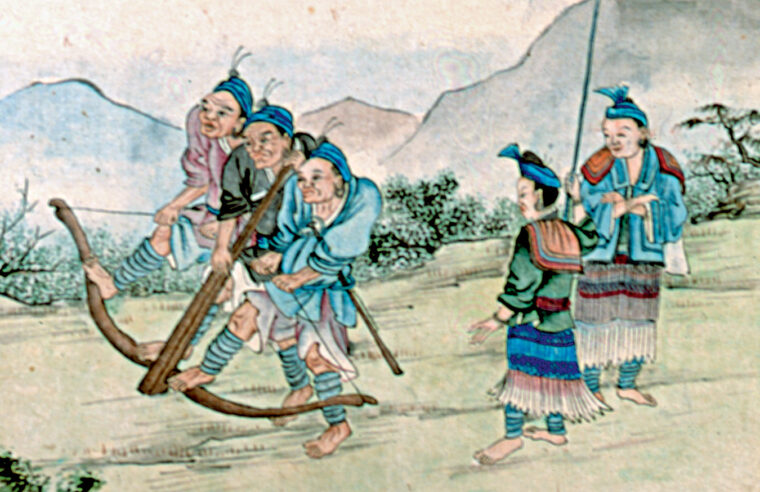
By the late 14th century the race between increased defense (armor) and a more powerful offense (the crossbow and later the longbow) resulted in a standoff. The general advancement in metallurgical skills wrought technological improvements that allowed for stronger, lighter armor, but also for better crossbows. By this date, wood, horn, and sinew bows of the century before had given way to tempered-steel bows, which in most circumstances, and at the right ranges, negated the protection afforded by the new body armor. This fact was not lost on the nobles.
The mounted class, on the one hand refusing to openly acknowledge the seriousness of the crossbow problem, but on the other realizing that body armor alone was not going to save their hides, did as many noble Christians did when faced with a difficult problem—they turned to the Catholic Church for help.
Why the Crossbow Was Banned by the Catholic Church
As early as the late 1090s the ruling class of western Europe petitioned Pope Urban II to ban the use of the crossbow because of “its brutality in war.” The Pope complied, but the Papal edict did not seem to make much headway then or later; nor did it prevent the merchant guilds in London, Paris, Genoa, and Prague from continuing to manufacture and sell, at a handsome price, thousands of crossbows each year. Further, the fact that the foremost soldier of the age, Richard I of England (The Lionhearted), was an expert with the weapon did little to advance the anticrossbow crusade.
The Church, with the strong encouragement of the European nobility, tried again, if not to completely ban the weapon, then at least to have it pointed at non-Christians. The Second Lateran Council in 1139 decreed that the device was unfit for use by Christians, and that those who used the crossbow against anyone other than infidels (Muslims and heretics) would be placed under penalty of an anathema.
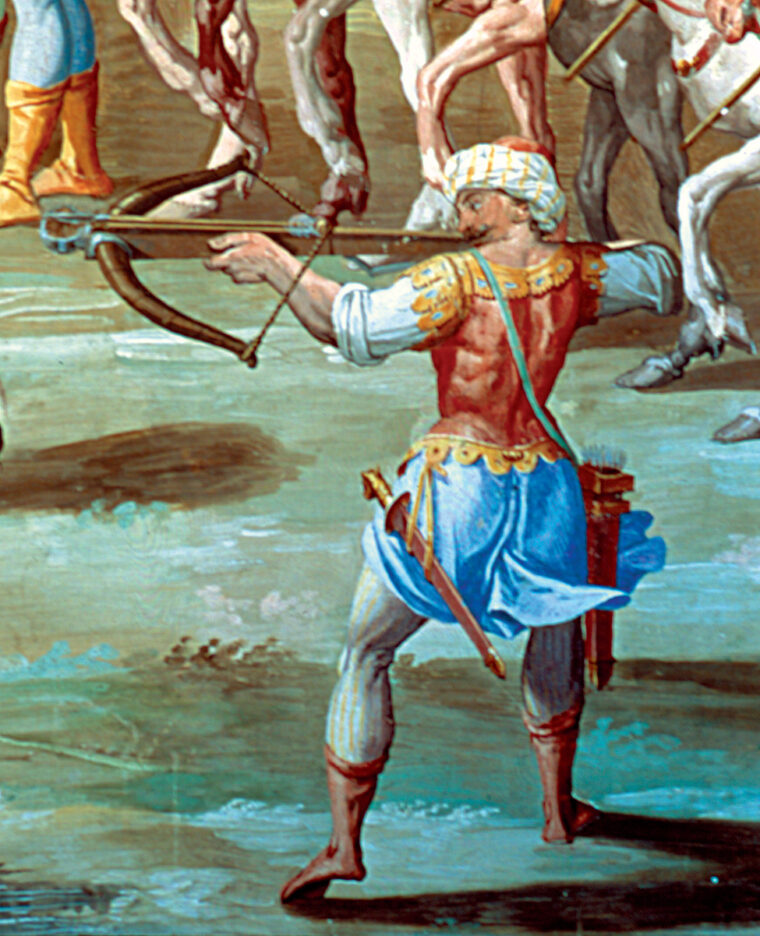
The prohibition was confirmed at the close of the same century by Pope Innocent III. Following the Church’s lead, and citing moral and religious reasons, Conrad III, Duke of Swabia and Holy Roman Emperor (1138-1152), forbade the use of the crossbow in his domains, which at that time meant all of central Europe. But the weapon was so popular on that part of the Continent, especially Bohemia, that the ban had the effect of quickening the spread of its use. Fearing contagion, the English aristocracy also banned the crossbow on religious grounds, but added a twist by giving the prohibition the color of civil law when inserting it into the Magna Carta of 1215.
Needless to say, the medieval crossbow survived all the decrees intended to bring about its demise. On the contrary, it continued to be the most favored infantry weapon in Europe, growing in use by leaps and bounds between the 13th and mid-15th centuries. The reasons for this steady rise in popularity were that the device was inexpensive to make and easy to master. Further, on the tactical level, the use of crossbows proved to be a wise choice owing to the type of warfare conducted between 1100 and 1500.
From the 10th to the 15th centuries battles in Europe tended to be between small groups of mounted knights and their retainers, supported by local levies of peasants armed with spears and bows. Battles were set-piece encounters where both sides had the opportunity to choose their ground, arrange their forces, and either wait to be attacked, initiate their own assault, or leave the scene if that appeared to be the most prudent course. In these circumstances, the crossbow was perfect. Crossbow units were assigned to those parts of the battlefield deemed to need their firepower the most. The ranges would be preregistered to ensure accurate fire at the proper distances. In these situations, the crossbow was equally effective in attack or defense.
But for every field engagement fought during the period, five or more sieges would be carried out. A siege was considered less risky than open battle, and the rewards could be immeasurably greater. Whereas enemy notables could be captured and later ransomed after a military encounter, the taking of a castle, city, or town would yield not only booty and greater ransom prospects, but also new land and subjects to tax. In this type of war, crossbows were even more suitable than on a battlefield. During a siege both the besieger and besieged could site their crossbows where they would do the most damage, and the weapon’s low rate of fire was minimized because the pace of a siege (versus that of a battle) was slow and more controlled by the participants. Also, the power and usefulness of the crossbow were greatly enhanced because the attacker was protected by trenches or the bowman’s pavise (a four-foot shield used to cover the bowman while he reloaded), or by the stone walls and towers of the castle sheltering the defenders.
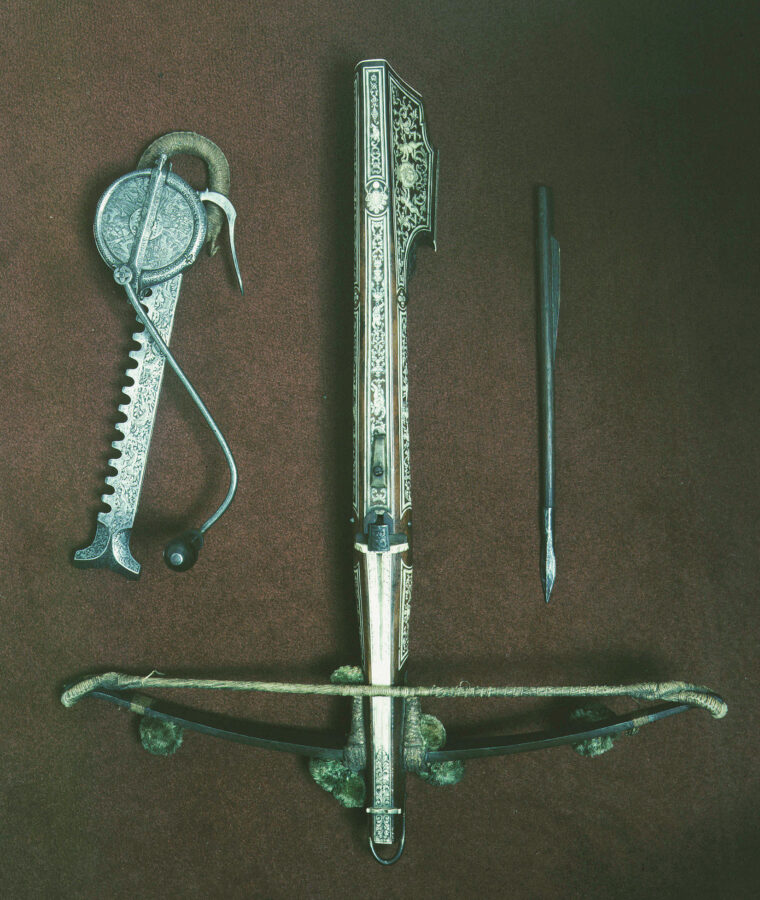
Medieval Crossbows Used by Mounted Soldiers
Crossbows were primarily infantry weapons during the medieval period, but on occasion they were put to good use by mounted soldiers. Philip Augustus, King of France, used mounted crossbowmen against King John of England during their war in the early 13th century. In 1238 Frederick II, the Holy Roman Emperor, employed a corps of Hungarian mercenary, mounted crossbowmen as rapid-moving skirmishers. They not only harried with impunity the enemy on the march, but also repeatedly severed their lines of supply. In 1239 Pope Gregory IX successfully used Provençal mounted crossbowmen as part of his mobile defense against incursions by the Lombard League.
Regardless of the snobbish contempt that knights showed crossbowmen, the latters’ participation in support of the high-brow horsemen during battle was essential. Two examples suffice. After the fall of the Moslem fortress of Acre in July 1191, Crusader forces under Richard the Lionheart moved south toward Jerusalem. Constantly menaced by the trailing army of Saladin, Richard nevertheless favorably completed the two-month trek with his 50,000-man army. His movement owed its success not least of all to a good plan, strict discipline, and counterfire against Muslim archery by Crusader crossbowmen dispersed throughout his moving column.
ty years later, when King Louis IX of France battled Islamic forces at the Battle of Mansura (February 8 and 11, 1250), the medieval crossbow was again decisive. Louis and a small force were in a poor situation—isolated and unsupported on one side of a wide canal near the Muslim camp 50 miles south of Cairo—when a Muslim force attacked. Louis and his band of knights were about to be finished off when supporting infantry arrived. Crossbowmen laid down such a a concentrated and deadly hail of bolts on the attackers, that the en’smy fled.
Although underrated and unappreciated by nobles and knights, crossbowmen continued to serve well into the 15th century. Their demise came not from the horsey set that always disregarded and derided them—even while fearing them—but from commoners like themselves who were not covered in body armor and who also plied their trade on foot. These were the longbowmen of England who, by their weapon’s extended reach and extensive firepower—first demonstrated at the Battle of Crécy in 1346—proved that after 400 years the crossbow and its practitioners would no longer have an effective role in warfare.
Arnold Blumberg, an attorney writing from Baltimore, Md., is a frequent contributor to Military Heritage.
